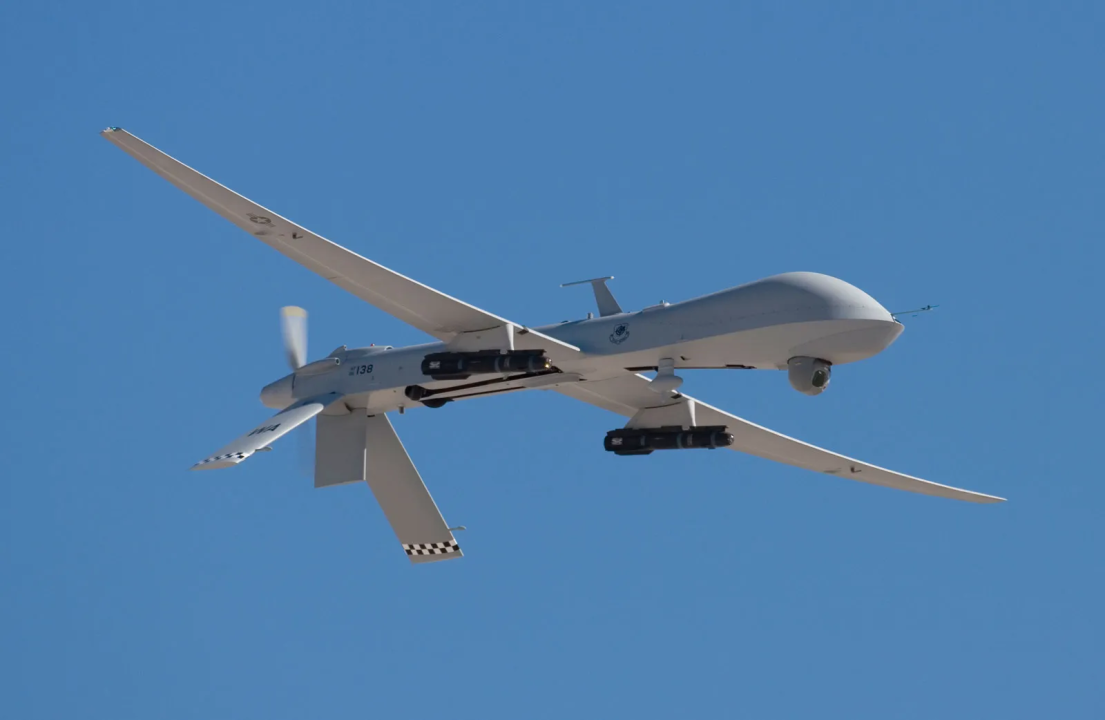United States unmanned aerial vehicle market is expected to observe a CAGR of 11.92% during the forecast period 2024-2031, rising from USD 11.94 billion in 2023 to USD 29.71 billion in 2031. The United States is one of the biggest unmanned aerial vehicle (UAV) markets and is growing at a steady rate. The increase is driven by the rising cost of purchasing autonomous drones and the growing demand for UAVs in commercial and military contexts. As of July 2023, the Federal Aviation Administration (FAA) reported approximately 900,000 registered drones in the United States. Among these registrations, 416,095 were for personal use, while 369,528 were for business purposes. Additionally, the FAA granted 331,573 certifications for remote pilots.
Anticipating that businesses with exceptional technical skills will contribute significantly to the scientific advancement of UAV propulsion systems and payload characteristics, this trend is expected to shorten development cycles and enhance UAV operating capabilities. Original equipment manufacturers (OEMs) and operators primarily focus on payload, endurance, and flying range. The introduction of alternative fuel-powered UAVs is poised to reshape the competitive landscape. Furthermore, utilizing composite-based materials in essential UAV components could enhance platform capabilities and promote widespread deployment across various industries.
The market growth is primarily fueled by increased defense spending and a stronger emphasis on improving intelligence, surveillance and reconnaissance (ISR) capabilities. A significant advantage driving the UAV market expansion is their ability to locate and neutralize adversaries without entering their field of vision. Additionally, the use of UAVs for counterterrorism and national security significantly influences the expansion of the UAV market in the United States. Integrating technologies such as artificial intelligence (AI) with existing tactical UAV systems holds promise for developing cutting-edge solutions.
Increasing Usage in Civil and Commercial Application
UAVs are rapidly being used in commercial applications, offering cost-effective and efficient product delivery. They avoid road traffic, resulting in faster delivery. UAVs are being used in various civil applications, including real-time monitoring, wireless coverage, remote sensing, search and rescue, security, precision agriculture, and civil infrastructure inspection.
For instance, in 2022, Walmart started its delivery service with the operator DroneUp in six states, making it the first large-scale drone delivery program in the nation. According to the company’s prediction, over one million parcels might be delivered by drone to certain areas of Arizona, Arkansas, Florida, Texas, Utah, and Virginia each year.
Unmanned aerial vehicles offer a bird’s-eye view and more efficient 3D mapping, surveying, and site inspection capabilities. They are being utilized more in mining, construction, and agriculture sectors for remote access, data-driven assessments, and crop identification. Additionally, UAVs can amplify internet transmissions, which makes them less problematic and more affordable than land-based networks. They can pinpoint regions in need of nitrogen or other fertilizers and provide access to remote areas.
Mounting Demand of Small UAVs to Influence the Market Growth
Small unmanned aerial vehicles that can span up to 2 meters long are being developed to improve military surveillance capacities. Usually, these drones are flown at speeds of less than 50 meters per second and at altitudes of about 125 meters. The increasing use of small UAVs for combat and intelligence, surveillance and reconnaissance (ISR) operations, along with increased defense sector investment, is one of the important factors driving market growth. The industry has grown due to an increase in start-ups and investor and government funding for the design and development of small UAVs for both military and commercial purposes.
For instance, in October 2023, at the Association of the U.S. Army Conference in Washington DC, Teledyne FLIR Defense, a division of Teledyne Technologies Incorporated, launched its new Black Hornet 4 Personal Reconnaissance System. The Black Hornet 4 represents the next generation of lightweight nano-drones, providing small units with improved covert situational awareness. It has a 12-megapixel daylight camera that performs exceptionally well in low light, and a high-resolution thermal imager that produces clear pictures and videos. The drone can fly in winds of up to 25 knots, weighs 70 grams, and can stay in the air for more than 30 minutes. Due to its single-rotor design, it can detect threats without being noticed. It can be launched in less than 20 seconds and is appropriate for missions where GPS is not available.
South Region to Hold the Largest Market Share
South region is expected to hold the highest market share in the United States UAV market, largely due to its significant role in UAV adoption across various sectors. This dominance is attributed to industries that rely substantially on UAV technology, strong infrastructure, and favorable regulatory regimes. The proactive use of UAVs in security, infrastructure inspection, and agriculture by Southern states further enhances their market position. As a result, South becomes a center for companies that specialize in UAV manufacturing, software development, and service delivery, reflecting local economic dynamics and propelling the growth and development of the UAV market in the United States.
Defense to Dominate Amongst Market Applications
Technological innovation is a major factor behind the demand for tactical UAVs in today’s combat scenarios. Tactical UAVs have historically been used for surveillance and reconnaissance missions. Through the integration of cutting-edge technology and advancements in sensor technologies, tactical unmanned aerial vehicles (UAVs) have evolved to support a variety of combat demands and duties. Tactical UAVs can now be used for two additional missions, wide-area surveillance and electronic warfare. According to the Stockholm International Peace Research Institute (SIPRI), the United States military spending is on the rise and will reach to USD 916 billion in 2023, holding the highest expenditure in the world. The unmanned aerial vehicle market has grown greatly due to this rise in spending, mostly because UAVs are being used more often in military and defense operations.
For instance, in June 2024, The US Lower House has approved a ban on the sale of DJI drones, a Chinese tech firm, as part of the US 2025 National Defense Authorization Act. The ‘Countering CCP Drones Act’ is part of the defense spending allocation. The bill, which includes 6% of DJI stock held by Chinese state-owned businesses, has raised concerns about Chinese government backdoors, national security risks, and surveillance using the company’s drones. However, the bill does not prohibit the use of DJI drones already purchased by the United States citizens.
Future Market Scenario (2024 – 2031F)
The United States is expected to witness a significant increase in demand for commercial unmanned aerial vehicles in various industries due to technological convergence, societal acceptance, and favorable regulatory frameworks. UAV technology is developing and becoming easier for operators to utilize. The process for lawfully operating commercial UAV operations has been optimized by the new drone legislation. For instance, significant changes have been made to the FAA regulation’s Part 107 update in the United States, including the removal of the section 333 exception and an easing of pilot restrictions. It is expected that the change in rules pertaining to the use of drones for commercial purposes will propel market growth. The incorporation of cutting-edge technologies, such as thermal cameras and artificial intelligence capabilities, is anticipated to enhance market demand for commercial UAVs in the United States. UAVs are now better equipped to handle disasters, maps, spies, and flies for longer due to these developments.
Report Scope
“United States Unmanned Aerial Vehicle Market Assessment, Opportunities and Forecast, 2017-2031F”, is a comprehensive report by Markets and Data, providing in-depth analysis and qualitative and quantitative assessment of the current state of United States unmanned aerial vehicle market, industry dynamics, and challenges. The report includes market size, segmental shares, growth trends, opportunities, and forecast between 2024 and 2031. Additionally, the report profiles the leading players in the industry, mentioning their respective market share, business models, competitive intelligence, etc.
Click Here:https://www.marketsandata.com/industry-reports/united-states-unmanned-aerial-vehicle-market
About Us:
Markets and Data provides a comprehensive/ panoramic understanding of markets at global, regional, and country levels. Examine changing consumer preferences, emerging challenges, underlying trends, and growth prospects to accelerate your business strategies.
Contact
Mr. Vivek Gupta
5741 Cleveland street,
Suite 120, VA beach, VA, USA 23462
Tel: +1 (757) 343-3258
Email: [email protected]
Website: https://www.marketsandata.com




